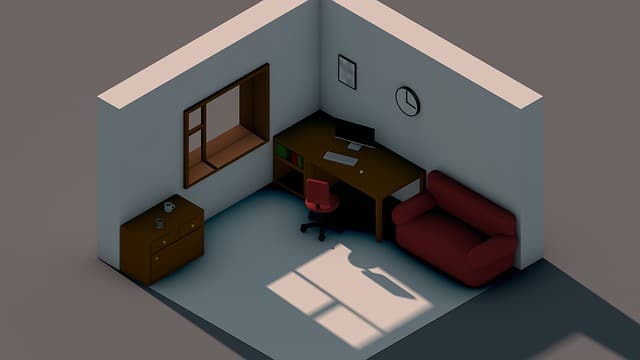
The bevel is a measuring instrument used in many areas.
The concept of bevel could come from the Italian quartabono or the Occitan escartabon . The term is used with reference to an instrument that is used in different areas to make measurements and draw .
General characteristics
The bevel is shaped like a right triangle since it has three sides and has a right angle. Since the three sides also have different lengths, it is a scalene triangle .
Bevels, which have a scale , are usually made of plastic or wood. It is common for them to be used together with rulers or squares to draw different angles and lines.
Differences with the ruler and the square
Before moving forward, it is important to mark the differences between these three utensils that are often used together. A ruler has a rectangular design and allows you to know the distance between two points and make straight lines. A square , meanwhile, is a right triangle like the bevel, but of the isosceles type because two of its sides and two of its angles are equal.
Applications
Due to its characteristics , a bevel offers a large number of possibilities in the use of technical tasks, some of which we mention below:
* making angles of 90° , 60° and 30° . It also serves to trace all possible combinations between these three angles: 150° (90° + 60°), 120° (90° + 30°) and again 90° (60° + 30°);
* the layout of parallels with any distance that is set in advance;
* the drawing of perpendicular lines, thanks to its two sides that are at 90°, which make it more similar to the square;
* the marking of the angular measurements, important beyond the drawing itself of the lines that form it;
* obtaining polar coordinates ;
* the quick location of the midpoint in a given figure;
* the drawing of symmetrical plane figures;
* the measurement of a given vector;
* drawing triangles. Although this possibility seems obvious, we should not downplay its importance, since in technical work it can be very useful and save time.
Architects, engineers, carpenters and shoemakers, among other professionals and workers, use the bevel in their daily work. Depending on each specialty, the bevel may have certain particular features that will serve to satisfy particular needs. In any case, precision is a fundamental aspect of any technical profession that includes mathematics or physics, and the bevel continues to prove its usefulness even in the computer age.
Isometric perspective
The bevel is also useful for drawing scenes in isometric perspective , whose projection consists of graphically representing an object in three dimensions reduced to two, so that its three fundamental orthogonal axes form angles of 120° and any dimension parallel to them can be measure using a single scale. This method results in images with a three-dimensional appearance, but with the peculiarity of not deforming their objects or altering their dimensions by moving them further or further away from the point of view, like a virtual camera in a video game.

With the bevel we can draw an isometric scene.
Thanks to the general characteristics of the bevel, we can take advantage of the corner that forms an angle of 30° to draw the lines that represent the horizontal plane of the isometric scenario , while with the right angle we can establish the base to draw the vertical line, parallel to this. In a drawing of this type, the structure of any three-dimensional body will always have as a vertical axis one parallel to the limits of the medium in which it is captured (a sheet or a screen, for example) but as a horizontal axis one that forms a angle of 30° with respect to the base.
Another meaning
The Royal Spanish Academy ( RAE ), finally, mentions in its dictionary the expression "echar el bevel" . This colloquial phrase refers to taking measures to achieve something.
